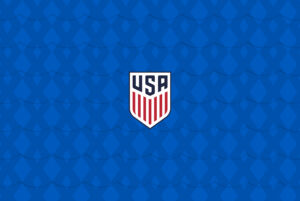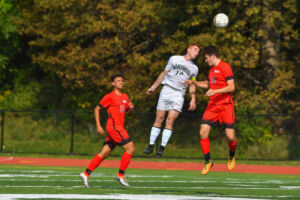A fundamental soccer skill is passing the soccer ball accurately with the right weight. The inside of the foot pass is the most common way to pass the ball in soccer because it offers the greatest area of control.
Positioning & Stance
- Stand side-on to your target so your non-kicking foot is closer to the ball.
- Your non-kicking foot should be positioned about hip-width apart from the ball and pointing in the direction you want the ball to go.
Eye on the Ball
Keep your eyes on the ball throughout the process. This helps with accuracy and focus.
Maintaining concentration and keeping your eyes on the ball during a soccer game requires a combination of mental focus, physical training, and practice.
Visualization
Before the game or practice, visualize yourself successfully tracking the ball and making precise plays.
Eye Training
- Peripheral Vision Exercises: Practice expanding your peripheral vision. This allows you to see the ball, even when it’s not directly in front of you.
- Focus Shifting: Rapidly shift your focus between objects near and far. This trains your eyes to quickly adjust and locate the ball during a game.
- Tracking: Practice watching the ball with your eyes as someone throws it or passes it to you from various angles and speeds.
Approaching the Ball
Approach the ball at a slight angle. This makes it easier to use the inside of your foot.
Your kicking leg should be slightly bent at the knee as you approach the ball.
Contact with the Ball
- Strike the ball with the inside of your foot (the area from the base of your big toe to the arch).
- Your ankle should be locked and firm upon impact. This offers better control and accuracy.
- Aim to hit the middle of the ball to ensure it remains on the ground and doesn’t lift.
Follow-Through
After making contact with the ball, your kicking foot should follow through toward your target.
- The follow-through determines the power and direction of the pass. A short follow-through usually results in a softer pass, while a longer follow-through will provide more power.
Upper Body
Your arms can be used for balance. Typically, as you approach to kick, your opposite arm to your kicking leg will swing out slightly.
Keep your upper body over the ball to ensure the pass stays on the ground.
Practice Tips
The more you play, the better you read the game and make more accurate passes. Experience and repetition are great teachers.
Practice With a Partner
Initially, start with short, gentle passes to get the feel.
As you get more comfortable, increase the distance and the speed at which you pass the ball.
Use cones as markers for defenders when setting up passing drills.
Adjust for Varying Situations
Depending on the game situation, you might need to vary your pass’s power, speed, and precision.
Practice various scenarios.
Conclusion
Remember that while the technique is essential, soccer is a game of fluidity and creativity. As you become more comfortable with the fundamental inside-of-the-foot pass, you can experiment with different types of passes and techniques. Also, watching professional soccer players – observing their techniques can provide valuable insights and tips on becoming a better passer of the ball.








